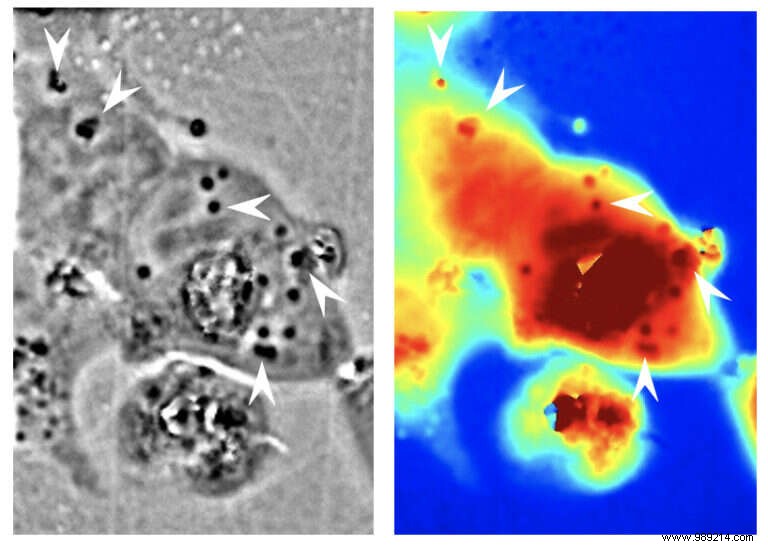Researchers have transferred the camouflage ability of a species of squid into human cells. In doing so, they managed to make them almost transparent. A first.
The principle of invisibility has fascinated us for millennia, inspiring works of philosophy and science fiction. But science is also interested in it, today more than ever. Recently, researchers have indeed developed a material capable of bending light around a target in order to make it invisible. An "invisibility cloak" which, a priori, will probably only have a military use.
Other research is currently being conducted in the same direction. One of them, published in the journal Nature Communications by researchers at the University of California (USA), is inspired by cephalopods.
"Active camouflage" is a popular survival strategy used by many octopuses, squids, and cuttlefish. In this work, the researchers mainly focused on the coastal opalescent squid (Doryteuthis opalescens ).
In these small cephalopods, females have the ability to change part of their appearance when hiding from a predator. They can, more specifically, modify the visual appearance of a band of their mantle, brown in color, making it appear completely transparent or tinged with an opaque white.
These squids are able to effect these changes in appearance through specialized reflective cells called leucophores, which are made up of particular proteins (reflectins) which, depending on how they are arranged, can change the way light is reflected . Thanks to this sleight of hand, these squids manage to blend in with their surroundings when needed.
Thanks to genetic engineering, the research team explains today that they have succeeded in introducing reflectins into the cytoplasm of human embryonic kidney cells. Observed in their Petri dish, the cells then, as expected, developed the same light scattering capacity as squid , proving that the light-scattering powers of these female squids may be transferable to other species.
“Thanks to quantitative phase microscopy, we were able to determine that the protein structures had different optical characteristics compared to the cytoplasm inside the cells , say the researchers. In other words, they behaved optically almost as they might in cephalopods .

In another experiment, the researchers tested whether this reflectance could be turned on or off by external stimuli. With this in mind, they subjected the cells to different concentrations of sodium chloride. Then measuring the amount of light transmitted by the cells, they found that those exposed to higher sodium levels scatter more light and stand out more from the environment, and vice versa.
“Our experiments showed that these effects appeared in modified cells, but not in cells lacking reflectins, demonstrating a potentially interesting method for tuning the properties of light scattering in human cells conclude the researchers.
Source